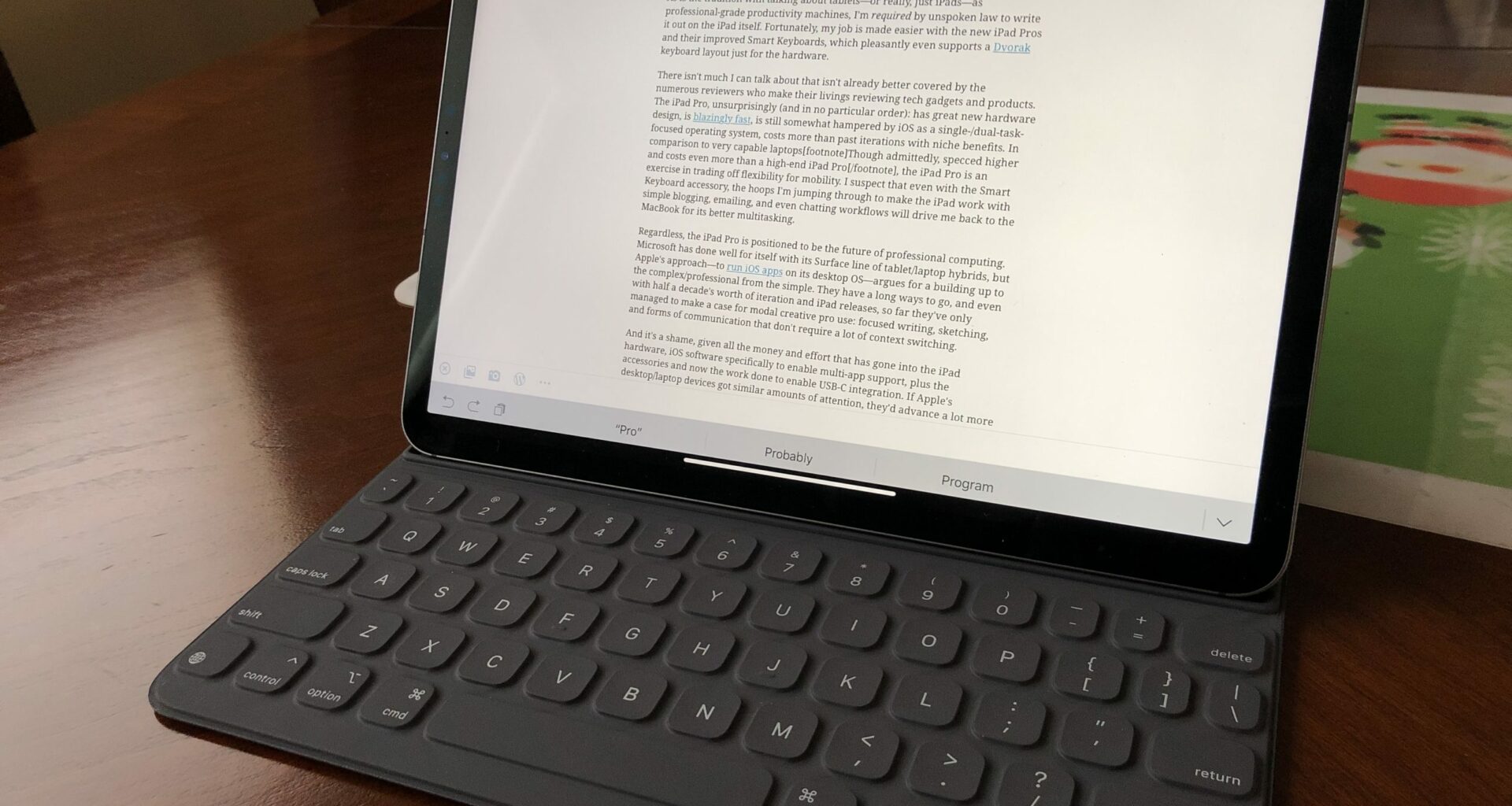As is the tradition with talking about tablets—or really, just iPads—as professional-grade productivity machines, I’m required by unspoken law to write it out on the iPad itself. Fortunately, my job is made easier with the new iPad Pros and their improved Smart Keyboards, which pleasantly even supports a Dvorak keyboard layout just for the hardware.
There isn’t much I can talk about that isn’t already better covered by the numerous reviewers who make their livings reviewing tech gadgets and products. The iPad Pro, unsurprisingly (and in no particular order): has great new hardware design, is blazingly fast, is still somewhat hampered by iOS as a single-/dual-task-focused operating system, costs more than past iterations with niche benefits. In comparison to very capable laptops1, the iPad Pro is an exercise in trading off flexibility for mobility. I suspect that even with the Smart Keyboard accessory, the hoops I’m jumping through to make the iPad work with simple blogging, emailing, and even chatting workflows will drive me back to the MacBook for its better multitasking.
Regardless, the iPad Pro is positioned to be the future of professional computing. Microsoft has done well for itself with its Surface line of tablet/laptop hybrids, but Apple’s approach—to run iOS apps on its desktop OS—argues for a building up to the complex/professional from the simple. They have a long ways to go, and even with half a decade’s worth of iteration and iPad releases, so far they’ve only managed to make a case for modal creative pro use: focused writing, sketching, and forms of communication that don’t require a lot of context switching.
And it’s a shame, given all the money and effort that has gone into the iPad hardware, iOS software specifically to enable multi-app support, plus the accessories and now the work done to enable USB-C integration. If Apple’s desktop/laptop devices got similar amounts of attention, they’d advance a lot more as computing platforms, and professionals were already using Macs (and PCs) to do their work satisfactorily. Android tablets aren’t even in the running; they don’t seem to have gotten past the stage of being oversized phones, and are primarily devices for media consumption2.
In fact, the main competition for the iPad Pro—particularly accounting for the speed of hardware and software improvement—is probably Chrome OS laptops and tablets like the Pixel Slate. Chrome OS is a logical extension of desktop computing, where once it was clear that most apps on the desktop were actually web apps3, they focused an entire operating system around that concept. It’s the computing ecosystem manifestation of native vs. web clients.
But minor annoyances and inconsistencies notwithstanding, the new iPad Pro is a delightful machine that makes sense within Apple’s computing lineup. The arc and overlap between iPads and MacBooks will force eventual convergence and obsolescence, but I suspect the competition will force this to happen sooner4 than what Apple had in mind.
Though admittedly, specced higher and costs even more than a high-end iPad Pro↩
Which is one of the reasons why Android tablets have taken over the very low-end of computing, as simple YouTube/Netflix machines.↩
Google themselves ushered in the era of web apps with the original Gmail.↩
For instance, officially putting a keyboard cover on the iPad.↩



